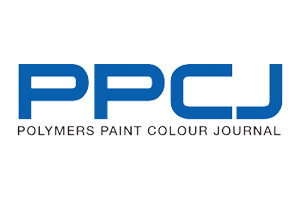
Asia is now the fastest growing regional market for ground calcium carbonate (GCC) and precipitated calcium carbonate (PCC), mainly driven by the expansion in the Chinese paper and plastics sectors, according to a report from Roskill Information Services, ‘Ground and Precipitated Calcium Carbonate: Global industry markets and outlook, 1st Edition, 2012’.
Demand and production levels are rising in Asia as the more traditional markets of Europe and North America face their own challenges.
PCC global demand of 74Mt in 2011, with China alone taking over 20%.
Paper remains the primary market and paper output in Asia rose by nearly 6%/yr over the past decade aided by the construction of new large scale paper mills. The plastics industry is the second largest market for calcium carbonate and the Asian region leads the world in terms of consumption. Roskill estimates that just under 60% of global GCC consumption in plastics is in Asia and for PCC, this share is even higher at over 85%. These figures reflect the increasing concentration of the plastics industry in Asia and the fact that PCC has been used in the Chinese industry for far longer than GCC.
The calcium carbonate industry is characterised by a few multinational producers and thousands of often very small producers. Twelve companies control around half of global GCC and PCC capacity. The three leading producers (Omya, Imerys and MTI) together holding more than 40% of GCC capacity and 35% of PCC capacity.
Growth in GCC and PCC output in recent years has been led by China. GCC production did not start in China until the 1990s but its share of global calcium carbonate output is forecast to rise to over 70% in the next few years. Combined production of GCC and PCC in China grew by 7%/yr between 2008 and 2011, equally divided between the two forms. Much of the recent increase in output was of dry ground calcium carbonate (DGCC), which is used in plastics. Over the last decade, a number of very large paper mills have come on-stream between Anqing and Shanghai that have satellite wet ground calcium carbonate (WGCC) plants based on marble feedstock from local deposits.
Overall world demand for GCC and PCC is forecast to rise by just over 3%/yr from 74Mt in 2011 to 90Mt in 2016. Continuing the pattern seen over the past few years, growth in terms of geographical area will be led by Asia. By 2016, Asia is projected to account for 52% of the forecast world total consumption compared with 48% in 2011.
Growth in terms of end use markets will still be led by the paper and plastics industries. The paper industry will remain the leading market for both forms of calcium carbonate through to 2016. Growth in this market is forecast at 3.1%/yr, with strong growth in Asia, driven by rising paper production and higher filler loadings. This will be partially offset by lower growth in industrialised countries where there is surplus papermaking capacity and rising use of digital media. Growth in PCC demand is likely to be slightly higher than for GCC.
In the plastics industry, growth in combined world demand for GCC and PCC is projected to rise at nearly 5%/yr through to 2016. Nearly 80% of additional demand through to 2016 will be located in Asia, mainly in China where over 10Mt/yr of new PVC capacity is planned to come on-stream over the next few years. By 2016, China and India are together estimated to account for more than 45% of world PVC demand.
Ground and Precipitated Calcium Carbonate: Global industry markets and outlook, 1st Edition, 2012 is available at £3500 / US$5800 / €4600 from Roskill Information Services Ltd, 54 Russell Road, London SW19 1QL England. Tel: +44-20-8417-0087. Fax +44-20-8417-1308 Email: info@roskill.co.uk Web: http://www.roskill.com/reports/industrial-minerals/ground-and-precipitated-calcium-carbonate-1




